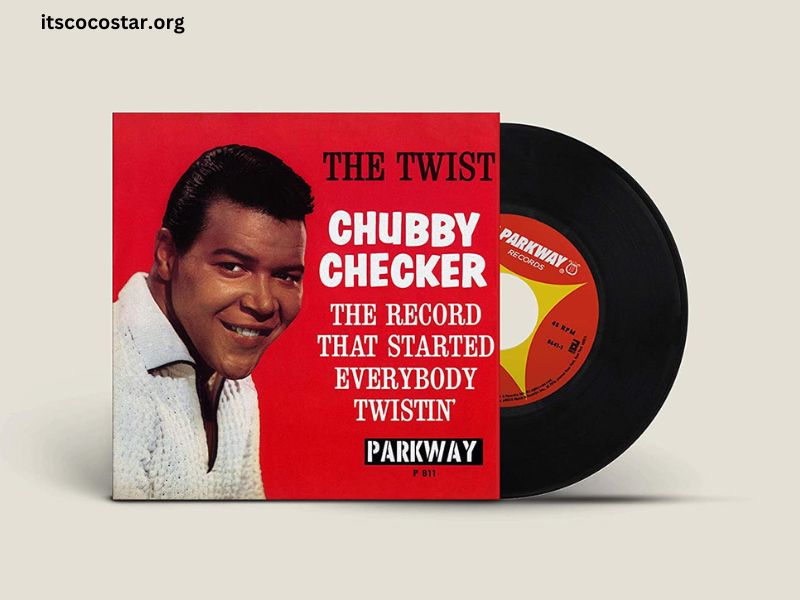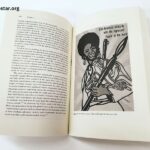In the landscape of 20th-century music, few songs have had as profound an impact as Chubby Checker’s rendition of “The Twist.” Released in 1960, it not only showcased Checker’s unique style but also became a cultural phenomenon that transcended music. The song’s release in the 45 RPM format, which became the standard for single releases, played a crucial role in its success and the subsequent twist dance craze that captivated the world. This article delves into the origins of “The Twist,” its journey through the music industry, and its lasting influence on popular culture.
The Birth of a Dance Craze
Chubby Checker: The Man Behind the Music
Born Ernest Evans on October 3, 1941, Chubby Checker was a singer and performer whose career began in the late 1950s. He adopted the stage name “Chubby Checker” as a playful nod to Fats Domino, another influential figure in rock and roll. Checker’s style blended rhythm and blues with a catchy pop sound, setting the stage for his later success.
The Original “Twist”
“The Twist” was not originally written for Checker. It was penned by Hank Ballard and first recorded by The Midnighters in 1959. However, it was Checker’s 1960 cover that propelled the song into the mainstream. With its infectious beat and simple, catchy lyrics, Checker’s version invited listeners to dance, making it accessible to a broad audience.
The 45 RPM Format
The 45 RPM (revolutions per minute) vinyl record format became popular in the 1940s and 1950s as a means to distribute singles. Unlike the larger 78 RPM records, 45s were more portable and affordable, allowing music to reach a wider audience. When “The Twist” was released as a 45 RPM single, it was perfectly timed to catch the burgeoning youth market eager for new dance music.
The Twist Takes Off
A Dance for Everyone
What set “The Twist” apart from other dance songs was its simplicity. Unlike the complex choreography of earlier dances, the twist allowed anyone, regardless of skill level, to participate. It required no partner, making it ideal for the burgeoning youth culture that was redefining social norms in the early 1960s. This inclusivity contributed to its widespread appeal.
Chart Success
Checker’s “The Twist” became an immediate hit, reaching number one on the Billboard Hot 100 chart in September 1960. It not only topped the charts for two weeks but also returned to number one in January 1962, making it the first song to ever reach the top of the charts twice. The success of “The Twist” paved the way for Checker’s subsequent hits, such as “Let’s Twist Again,” which also capitalized on the dance craze.
The Twist on Television
Television played a crucial role in popularizing “The Twist.” Checker’s electrifying performances on shows like “American Bandstand” brought the dance to living rooms across America. Host Dick Clark was instrumental in promoting the twist dance, encouraging viewers to join in. This exposure helped solidify the song’s status and showcased Checker as a charismatic entertainer.
The Impact of “The Twist” on Music and Dance
Influencing a Generation
The twist dance craze had a ripple effect on music and culture. It inspired countless artists to create songs with simple, danceable beats. This led to a proliferation of dance music in the 1960s, with bands like The Beach Boys and The Beatles incorporating similar rhythms into their work.
A Shift in Dance Culture
Before “The Twist,” many popular dances required specific moves and often a partner. The twist, however, was liberating; it encouraged self-expression and individualism. Young people embraced it as a way to assert their identity, leading to a broader cultural shift. The dance was a form of rebellion against the norms of the previous generation, contributing to the youth-centric culture of the 1960s.
The Twist in Popular Media
The twist also permeated popular media beyond music. Movies and television shows of the era featured the dance, and its popularity was evident in films like “Hairspray” and “Dirty Dancing.” These depictions helped solidify the twist as a cultural touchstone, further embedding it in the American psyche.
Legacy of Chubby Checker and “The Twist”
A Lasting Influence
Chubby Checker’s influence extends beyond his hit single. He became a symbol of the 1960s dance movement, inspiring generations of performers and dancers. The twist set the stage for future dance crazes, from the Macarena to the Cha-Cha Slide, demonstrating the enduring appeal of simple, accessible dance music.
Recognition and Honors
Checker’s contributions to music have been recognized with numerous awards and honors. In 2008, he was awarded the prestigious Grammy Lifetime Achievement Award, and in 2020, he was inducted into the Rock and Roll Hall of Fame. These accolades serve as a testament to his lasting impact on the music industry and popular culture.
Revivals and Continued Popularity
Even decades after its release, “The Twist” continues to be celebrated. It has been featured in various media and is often included in playlists celebrating classic dance hits. Its revival during the 1980s and 1990s, when older generations shared the dance with their children, further solidified its place in American culture.
Conclusion
Chubby Checker’s “The Twist” is more than just a song; it is a cultural phenomenon that reshaped the landscape of music and dance. Its success was facilitated by the 45 RPM format, which made it accessible to a wider audience. The simplicity of the dance allowed for mass participation, fostering a sense of community among young people. Checker’s charismatic performances and the song’s infectious rhythm ensured its place in music history, influencing generations of artists and dancers.
As we reflect on the legacy of “The Twist,” it serves as a reminder of the power of music to bring people together, challenge societal norms, and create lasting cultural shifts. Chubby Checker’s contribution to this legacy remains undeniable, as “The Twist” continues to inspire and entertain, proving that great music knows no bounds.







